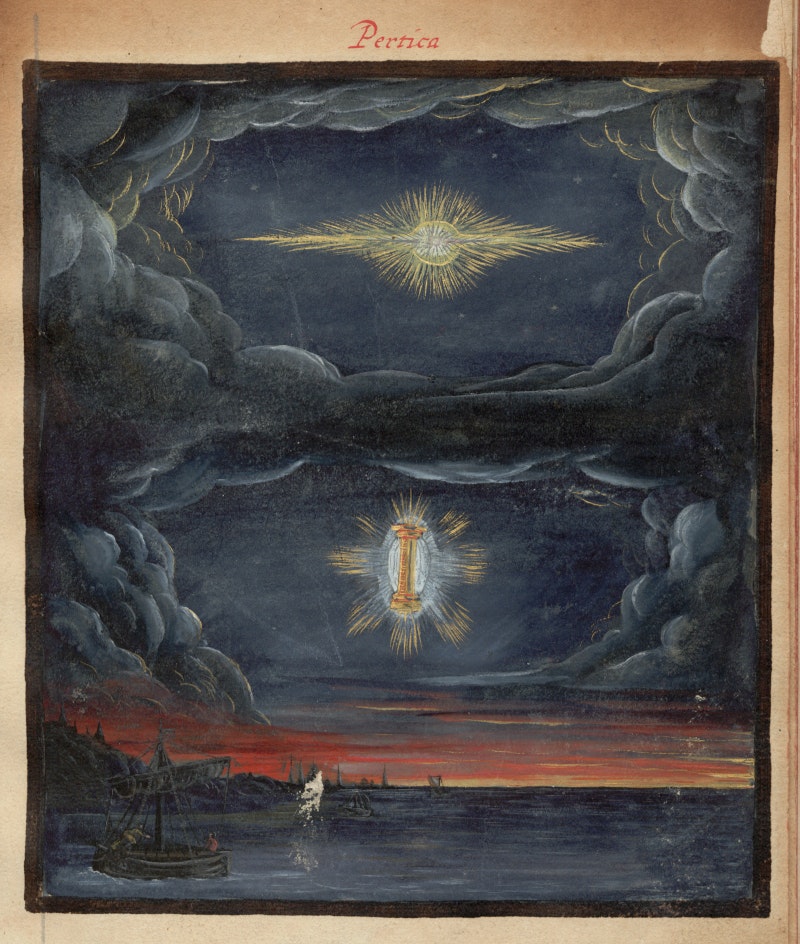At a Facebook UFO page I haunt was shared a post on Paul R. Hill’s Unconventional Flying Objects, Hill’s attempt to engineer a flying saucer. Hill’s book brought to mind the similar attempt by NASA engineer Josef F. Blumrich to similarly reverse engineer the space ship he believed to be described in the Book of Ezekiel. Blumrich’s book, The Spaceships of Ezekiel, is a remarkable exercise in “speculative engineering,” so much so, at times, it seems to transcend the perversity of its hermeneutic. What I mean is that Blumrich, like every other Ancient Astronaut/Alien “Theorist,” “reads” (interprets) premodern artifacts, texts and otherwise, in a manner alien to, if not utterly ignorant of, the context of their composition, the conventions of written expression or artistic representation of the time.
As chance (synchronicity?) would have it, The Public Domain Review recently shared some images from The Comet Book (1587) (one of which I reproduce, above). Many of the images are precisely of the kind that Ancient Alien enthusiasts point to as examples of premodern sighting reports: as no comet surely looks like that, the ancients must have mistaken a UFO/UAP for a “comet”, given their unfamiliarity with what is common knowledge to we moderns, shoehorning the strange into a more-or-less familiar category. But such a reading, of, e.g., the illustration above, assumes the picture is rendered according to modern, not ancient, conventions of representation, a mistake that grounds the inference that what is depicted is something strange (a UFO/UAP) made natural (a comet). Premodern pictures are not pretechnological attempts at photographic representation, just as premodern texts are not technologically-ignorant “sighting reports.”
I’ve made this argument at greater length and with regards to two, specific examples: the Nuremberg 1561 and Basel 1566 broadsheets and the tales of Medieval sky ships (posts collated, with related others, here), and with regards to Jacques Vallée’s presentation at the first Archives of the Impossible Conference (other responses to Vallée’s readings of premodern UFO and “alien” encounters can be read, here.). The question can be taken up more rigorously (and, thereby, problematically)—there is no knock-down argument one way or the other—but an ahistorical reading of history, i.e., one that fails to take into account historicocultural difference is, simply, “chronocentric” and mistaken.


